Neural Discrete Representation Learning
Abstract
- discrete representation
- to prevent “posterior collapse”
- learnt prior distribution
Motivation
- Goal: optimize $p_θ(x)$ while conserves the important features of the data in the latent space
- existing VAE models suffer from “posterior collapse”
- what is the “posterior collapse” ?
- please refer Discussion #1. 1
- what is the “posterior collapse” ?
VQ-VAE
Discrete Latent Variables
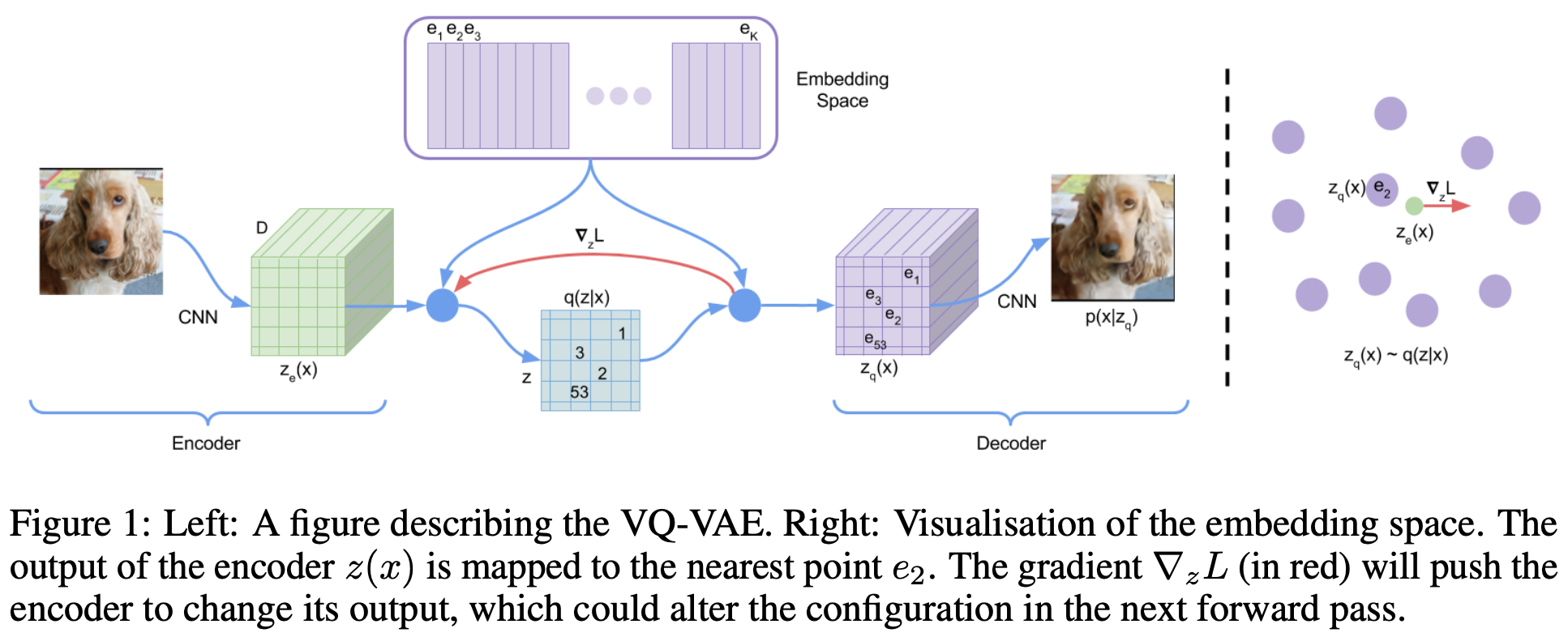
each input is encoded into $z_e(x)$
then each embedding vector is calculated into $e\in ℝ^{K\times D}$ by nearest neighbor lookup
$q(z|x)$ are defined as:
$q(z=k|x)$ is deterministic
- let $p(z)$ a uniform over $z$
- $D_{KL}$ is constant and equal to $\log K$
In conclusion, the discretization process is as follows:
Learning
- Gradient cannot be defined on discretization process
- Approximate grad by straight-through estimator and copying grad
- To calculate grad, calculated grad from the decoder $\nabla_z L$ is passes to the encoder
About the Loss
- Reconstruction Loss (first term)
- reconstruct $x$ from quantized $z_q(x)$
- Codebook Loss (second term)
- let the codebook entry $e$ to be close to the $z_e(x)$
- what is the stop grad?
- we cannot compute the loss directly from $q_φ(z_q(x)|x)$
- $x$ and $z_q(x)$ has no grad connection
- We gotta train by codebook loss
- However, if we design the loss like $\|z_e-e\|^2_2$, it will not converge since two moves together
- why?
- if two moves simultaneously, they may miss each other
- it’s like chasing each other’s tails
- why?
General
the first term of the loss equation is reconstruction term $\log p(x|z_q(x))$
- It is not connected to $z_e(x)$
- the dictionary learning algorithm is the Vector Quantization (VQ) algorithm
VQ calculates L2 error between $e_i$ to $z_e(x)$ (second term)
- $e_i$ stands for the embdding
- $sg$ stands for the stopgradient operator that is defined as identity at forward computation time and has zero partial derivatives
- TL;DR: since it is not possible to calculate the distance between $z_e(x)$ and $e$, the term is divided into two term and calculated individually.
- $$\log p(x) = \log \sum_k p(x|z_k)p(z_k)$$
The decoder can be trained after VQ mapping is fully converged. (Discussion #3)
Prior
- prior distribution $p(z)$ is a categorical distribution
- While training VQ-VAE, the prior is kept constant and uniform
- After training, z is fit to an autoregressive distributuion $p(z)$ so that that can generate $z$ by ancestral sampling.
- But how does this prior prevent the posterior collapse problem? Discussion #2 2
- What kind of generative modeling is VQ-VAE? Discussion #3 3
Experiments
Images
- Image $x\in ℝ^{128×128×3}$
- Latent $z\in ℝ^{32×32×1}$ (with K=512)
- Reduction of $\frac{128×128×3×8}{32×32×9} \approx 42.6$ in bits. (Question #5)
- Used PixelCNN prior
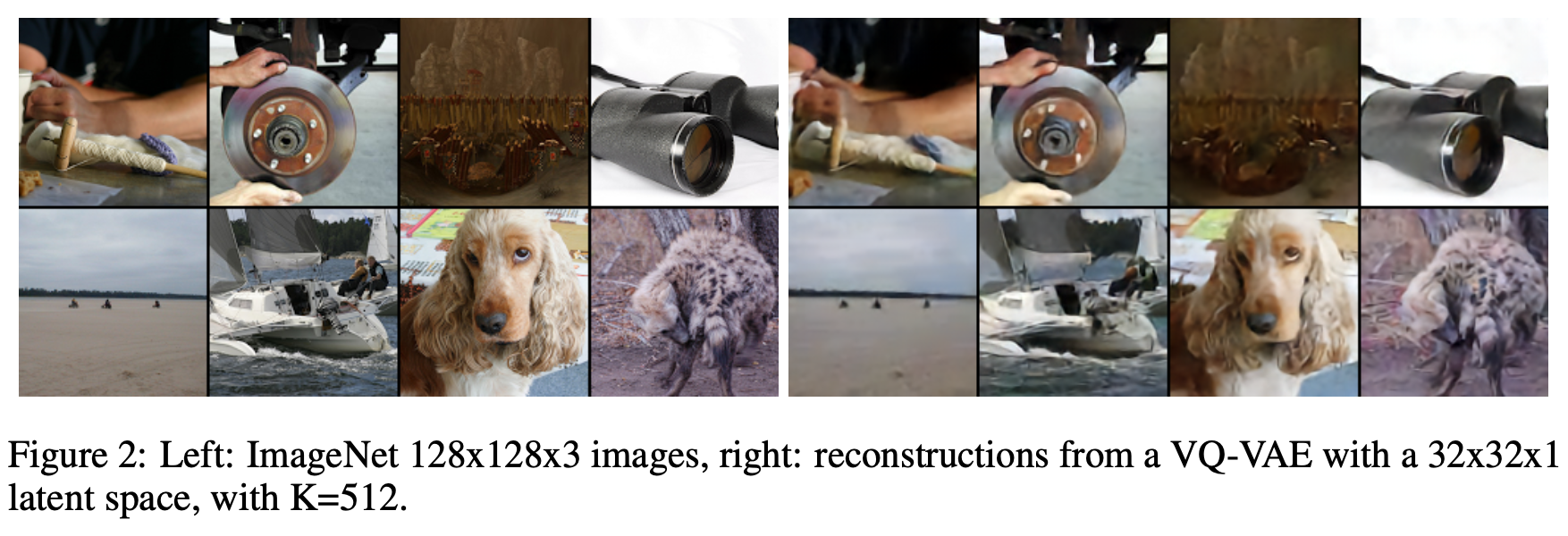
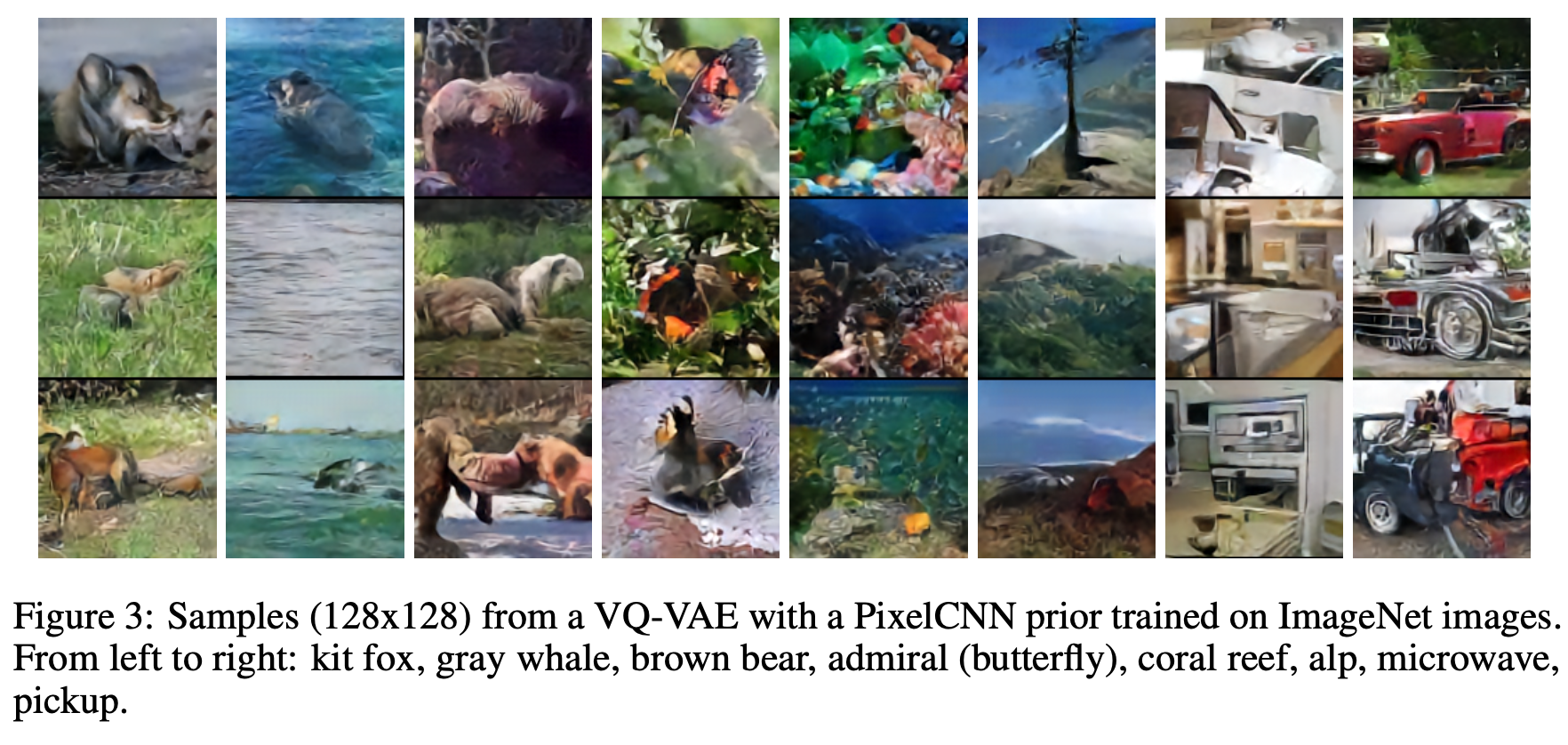
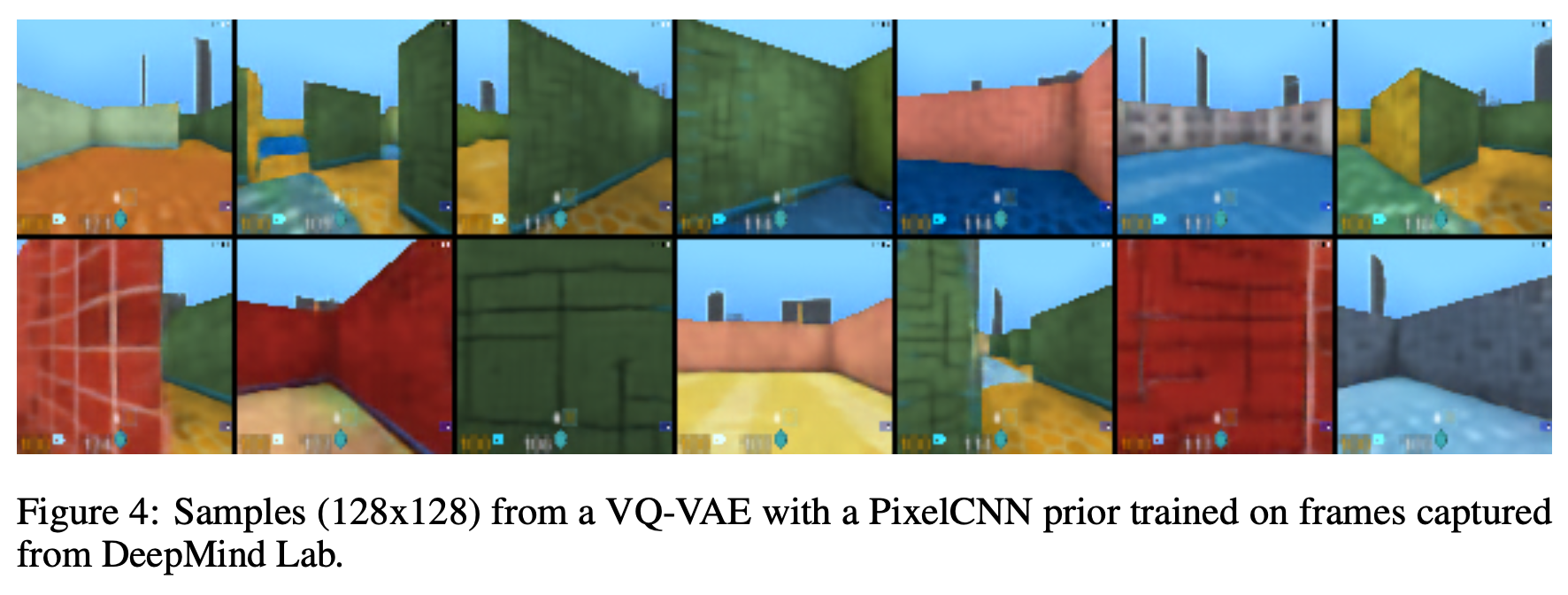
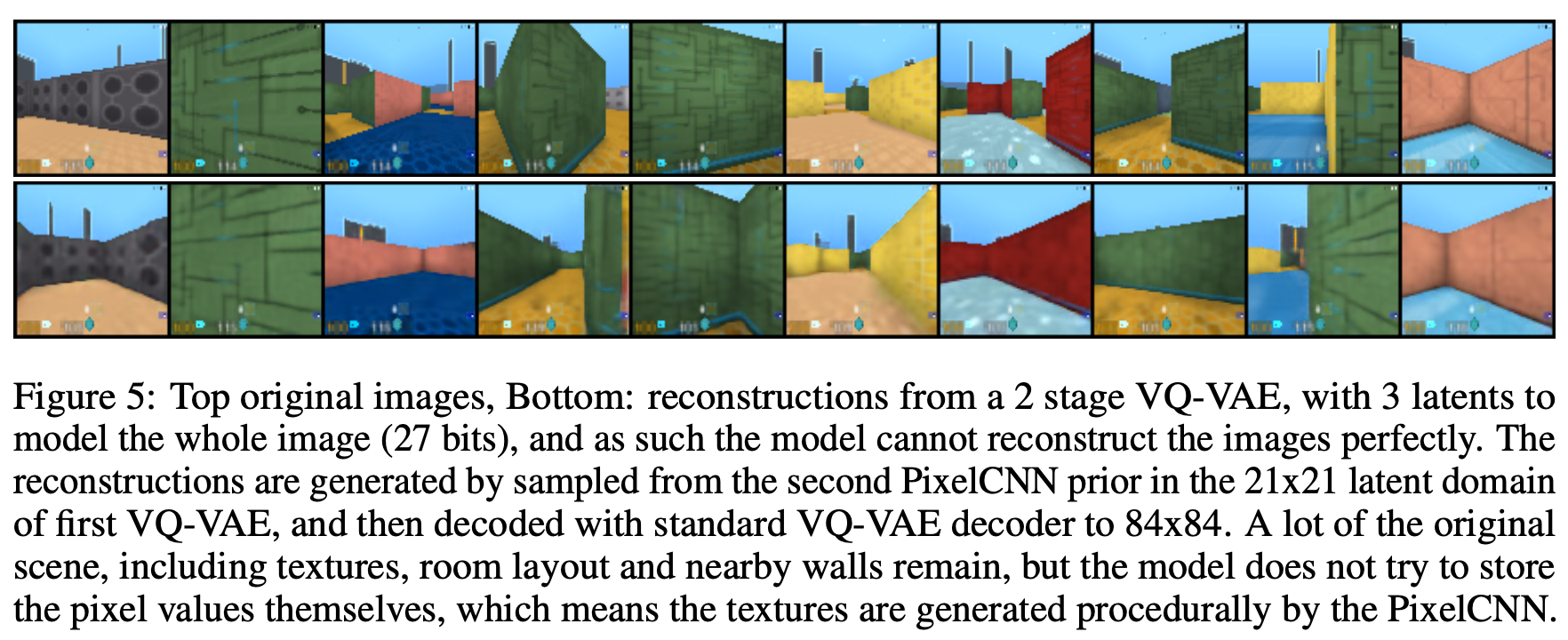
Audio

Video

Discussion
- In the VAE, if the decoder is super strong, than it may be able to generate a random average-looking image to minimize the loss
- Then the encoder fail to learn $q_φ(z|x)$, it just learn $p(z)$
- the encoder of the VQ-VAE is not a probabilistic model.
- So there’s no such $q_φ(z|x)$
- Since the output is not a pdf, there’s no KL divergence neither
VQ-VAE is explicit, intractable generative model
- It explicitly design the $p_θ(x)$
- $$\log p(x) \approx \log p(x|z_q(x))p(z_q(x))$$
- From Jensen’s inequality, $\log p(x)\ge \log p(x|z_q(x))p(z_q(x))$
- The encoder and the decoder are determisitic functions
- can be interpreted as the dirac delta function
- the stochasity is implemented in sampling $z$
- It is autoregressively sampling in ancestral sampling by PixelCNN
- $p(z)$, which is modeled by PixelCNN, is very complicated and not tractable
- It explicitly design the $p_θ(x)$
why log k?
Question #5 What is the meaning of 8 and 9 in the formula?